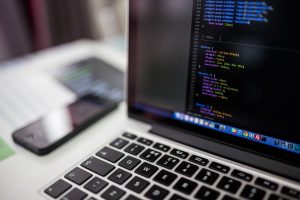What We Have Covered in This Article
Last Updated on March 16, 2021 by Editor Futurescope
At some point in life, everyone must realize that they need to start learning Python. This isn’t a joke; it’s actually quite a valid statement. Just a few years back, only computer science students and engineers would have to learn how to code. However, at present, Python programming has become a necessity, even for people who’re not from a CS background. This is mostly because Python is an easy language to learn, and has a diverse range of uses.
And if you’re yet to start learning Python, don’t worry, you can still catch up. To help you get started, here’s an 8 step guide that’ll direct you through the early stages of your learning process.
Step 1: Finding the motivation
To get started with Python, you must first find the right motivation for it. Ask yourself a simple question – “Why should I start learning Python?” It could be because you want to learn a new programming language, get into coding, enhance your CV, make a career as a programmer, or simply pass a computer science course at your college. Your motivation behind starting Python will determine how much time and effort you want to put into it.
Step 2: Looking for the perfect tutorials
The best way to start learning Python is by signing up for an online course or tutorial series. Choose a course that your friends or college instructors would recommend. You can also opt for anything on the internet that’s highly rated by a good number of people. MOOC platforms like Udemy and Coursera have some of the best Python courses online. You can also learn the same things for free on YouTube.
Step 3: Practicing every day
To get good at programming, you need to practice it every day. Dedicate at least a couple of hours of your time each day to learning Python. Start by recalling some of the things you learned the previous day, and then work on new lessons. You need to practice coding, especially as a beginner, so that you can familiarize yourself with the syntax, and develop logical and analytical skills to solve various programming problems.
Step 4: Learning from your mistakes
Don’t give up on a program, even if you keep encountering errors for days. Try to get to the bottom of it, because that’s one of the best ways to learn. Once you fix the error, and the code is running smoothly, you’ll feel a great sigh of relief. You’ll also learn a lot about the mistakes you made, and ways to avoid making the same ones in the future. This is particularly helpful in building your programming basics, especially when it comes to understanding the logic behind certain blocks of your code.
Step 5: Working on lab assignments
If you’re a CS student with a Python course, you must do all your lab and class assignments on your own. Keep your code plagiarism-free. You might make a ton of mistakes at first, but as discussed previously, that’s how you’ll be able to learn. If you need help with your programming assignment, you can consult your course instructor or a TA. Thousands of students also take computer science assignment help from various online forums. You can do so too.
Step 6: Discussing on public and private forums
Start visiting online Python discussion groups or forums. You can find them on Stackoverflow, Reddit, or even on Facebook. Engage in discussions with them (at least with the beginners). If you’re facing any problem with your code, or have any questions in general, you can also post about them in the forums. The programming community is very tight. No one will ignore you if you ask for help politely. Besides, each user is likely to provide you with a different type of solution to your problem. Hence, you’ll be exposed to multiple ways of solving a single problem.
Step 7: Acquainting yourself with Python libraries
There are thousands of Python libraries out there with new ones coming out every week. You don’t have to get acquainted with all of them, but you should be familiar with the most used ones. Among them, Pandas, and NumPy are two libraries that you must know how to use.
Step 8: Looking forward to the future
Once you’ve started learning Python, you’ve automatically opened the doors to a lot of opportunities. After getting done with the basic and intermediate stages of Python, you can move towards data science, artificial intelligence, machine learning, business intelligence and analytics, and so on. The opportunities are endless; you just have to decide which direction suits you the best.









